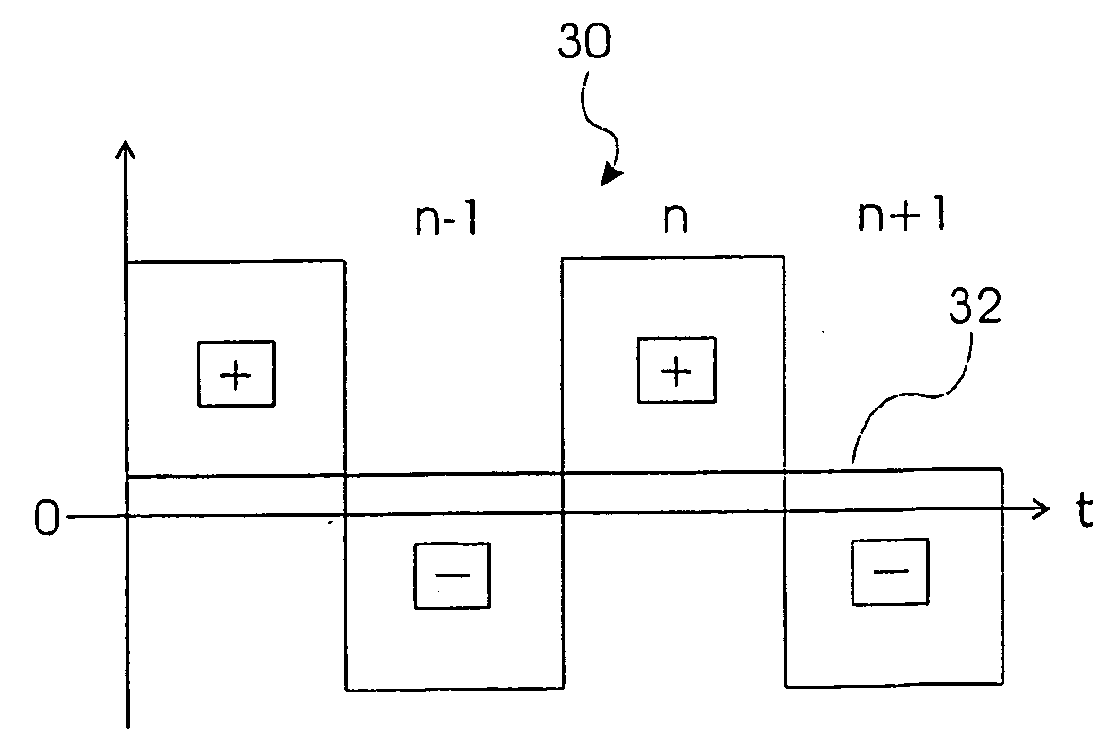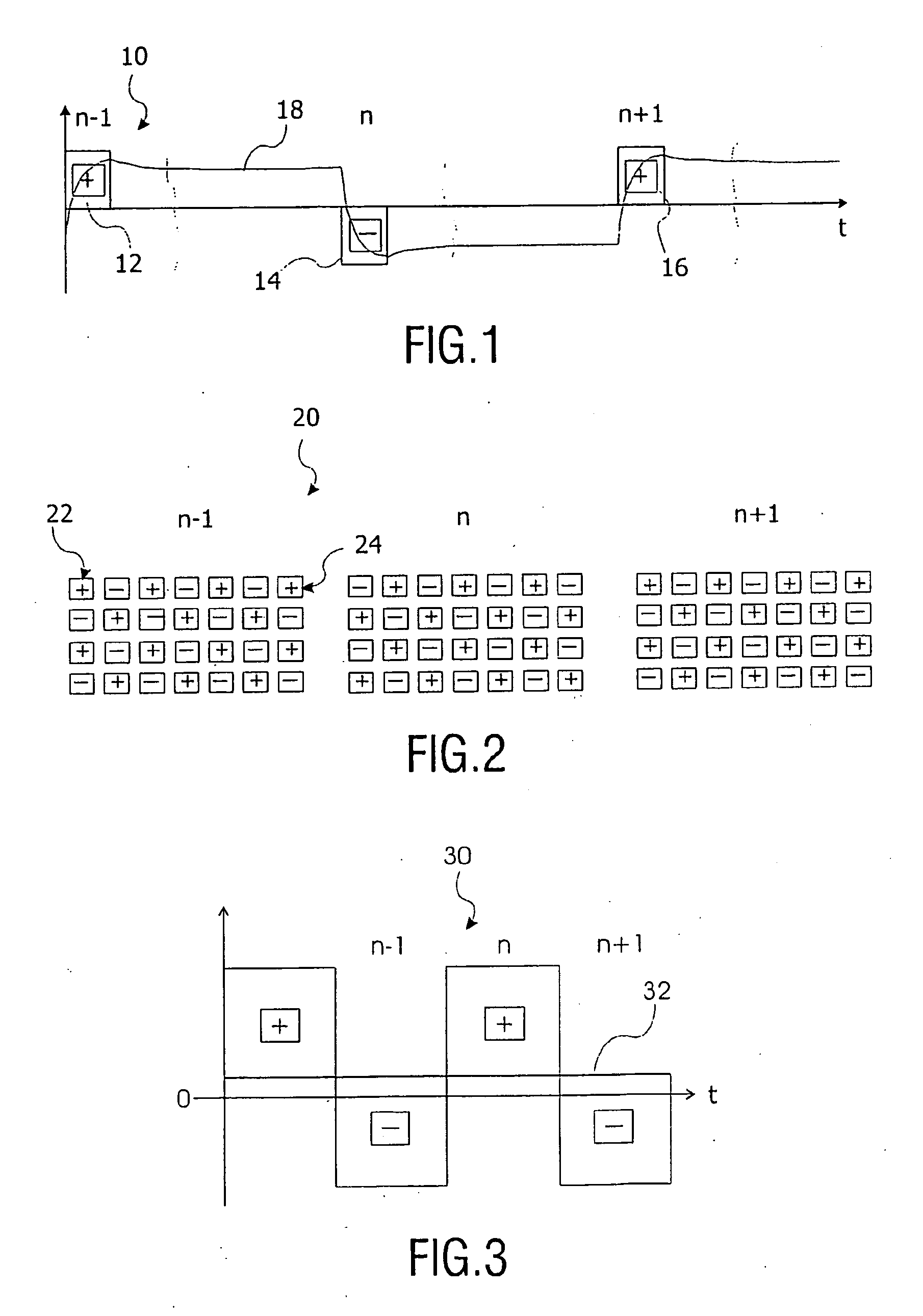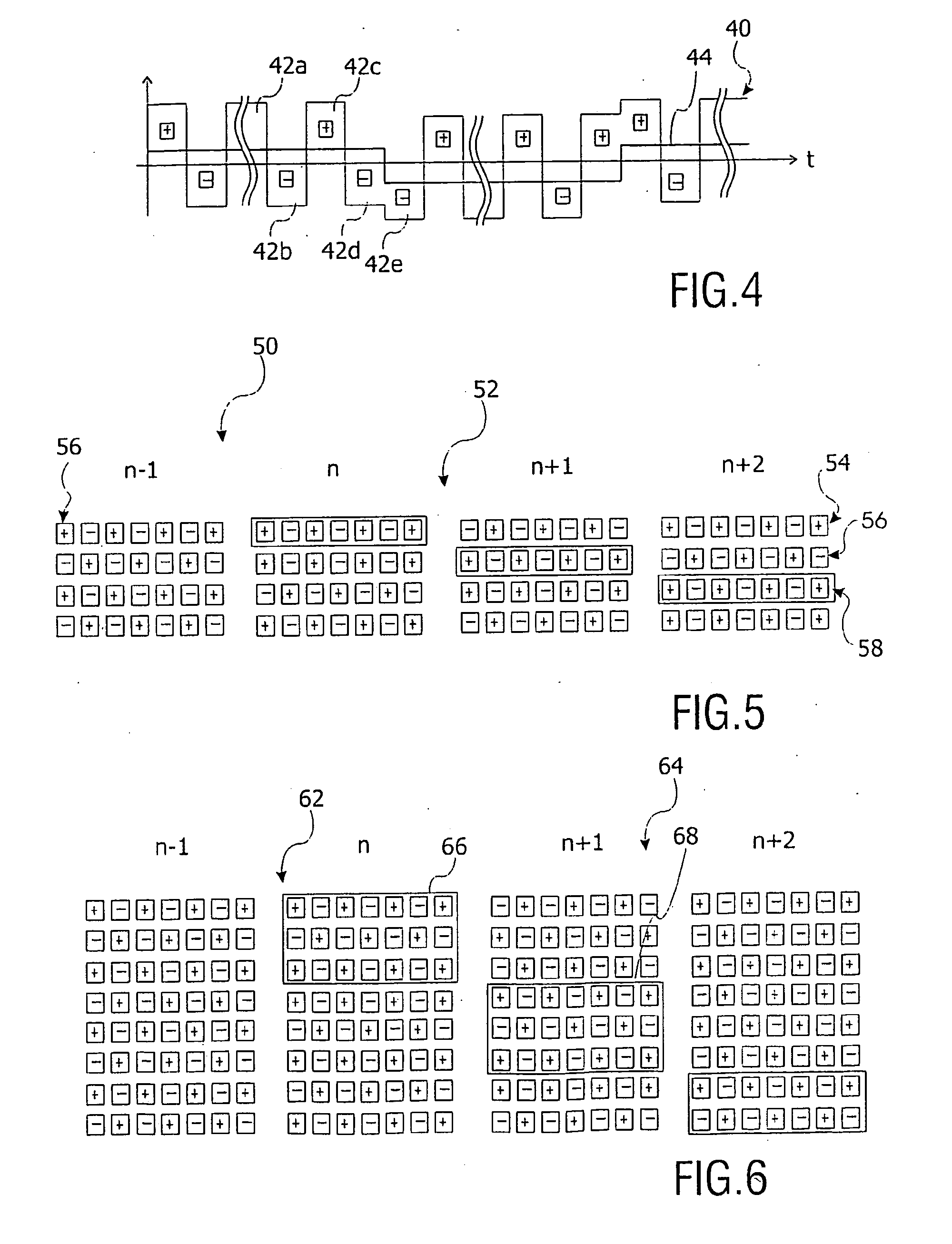Driving Liquid Crystal Display with a Polarity Inversion Pattern
a liquid crystal display and matrix technology, applied in non-linear optics, static indicating devices, instruments, etc., can solve the problems of poor de-interlacement or de-interlacement of television applications of active matrix liquid crystal displays, and achieve the effect of reducing image sticking
- Summary
- Abstract
- Description
- Claims
- Application Information
AI Technical Summary
Benefits of technology
Problems solved by technology
Method used
Image
Examples
first embodiment
[0032]FIG. 4 shows a graph of a driving voltage 40 for a pixel as function of time t according to the present invention, which driving voltage 40 has an alternating polarity during a predefined number of frames, exemplified by reference numerals 42a through 42d. Thereafter, the driving voltage 40 has an inverted polarity inversion scheme and repeats the polarity of frame 42d in frame 42e. This introduces a shift or a polarity alternation of a DC offset 44, thereby compensating for charge building up across a pixel for an extended period of time, since the DC offset 44 averages zero over time. Consequently, the driving voltage 40 according to the present invention prevents image retention on a liquid crystal display.
[0033]FIG. 5 shows a polarity inversion scheme 50 according to the first embodiment of the present invention for a matrix of pixels 52. The polarity for each pixel in subsequent frames n−1, n, n+1 and n+2 is indicated with “+” and “−”. The polarity of the pixels in the ma...
second embodiment
[0034]FIG. 6 shows a polarity inversion scheme 62 according to the present invention wherein the polarity inversion scheme excluding rows subsequently in subsequent frames is performed on a plurality of rows 66, 68 of a matrix of pixels 64 for frames n−1, n, n+1, n+2. The number of rows maintaining the same polarity in two consecutive frames should be less than a half of a total number of rows of the matrix, otherwise the frequency of polarity inversion on a pixel in the matrix 64 is smaller than the half of the frame frequency, and this may lead to visible large area flicker.
third embodiment
[0035]FIG. 7 shows a polarity inversion scheme 70 according to the present invention, wherein the polarity inversion scheme excluding a row or a plurality of rows is not restricted to a number of rows, but may also be applied rather to a number of consecutive pixels 74, 76. The polarity inversion exception is in an alternative embodiment not even restricted to consecutive pixels. In fact, it is only important to make a driving voltage, shown in FIG. 4 as reference numeral 40, for each pixel in a matrix 72. However, having the polarity inversion exception restricted to consecutive pixels provides a cheaper hardware solution.
[0036]During a change of the polarity inversion scheme, so when excluding a row, a plurality of rows, or pixels as described with reference to above figures, the light output of a liquid crystal display slightly increases for a normally black display and decreases for a normally white display. This difference 80 in light output, which is shown in FIG. 8, is visibl...
PUM
| Property | Measurement | Unit |
|---|---|---|
| polarity | aaaaa | aaaaa |
| response time | aaaaa | aaaaa |
| time | aaaaa | aaaaa |
Abstract
Description
Claims
Application Information
 Login to View More
Login to View More - R&D
- Intellectual Property
- Life Sciences
- Materials
- Tech Scout
- Unparalleled Data Quality
- Higher Quality Content
- 60% Fewer Hallucinations
Browse by: Latest US Patents, China's latest patents, Technical Efficacy Thesaurus, Application Domain, Technology Topic, Popular Technical Reports.
© 2025 PatSnap. All rights reserved.Legal|Privacy policy|Modern Slavery Act Transparency Statement|Sitemap|About US| Contact US: help@patsnap.com



